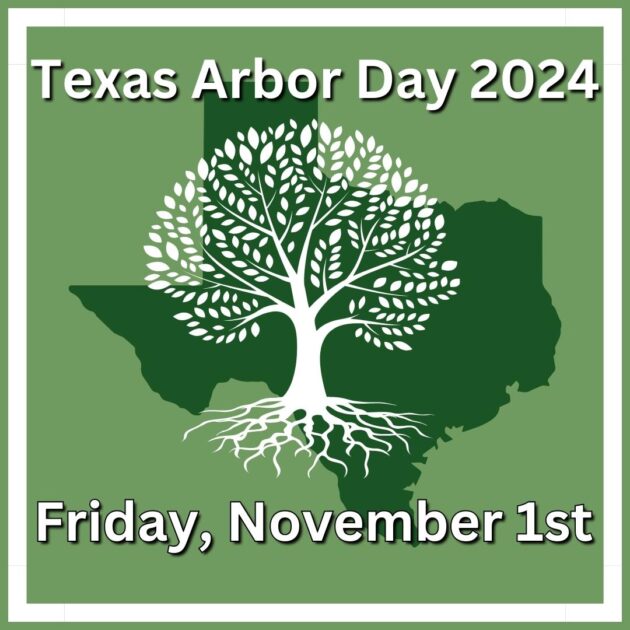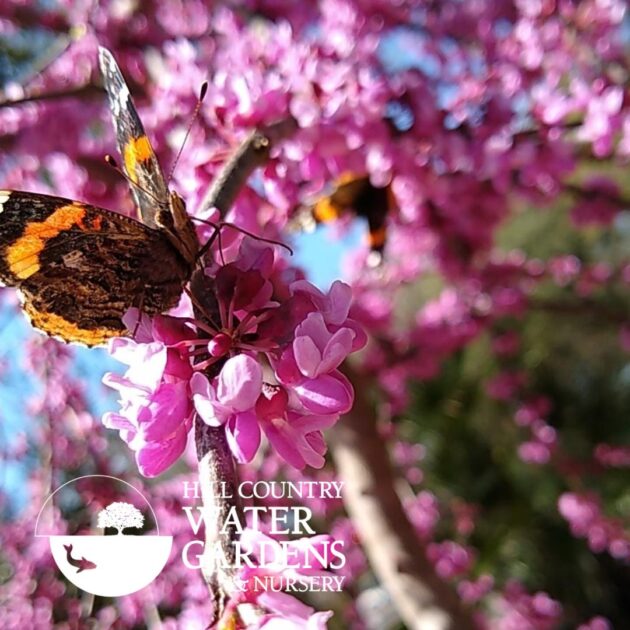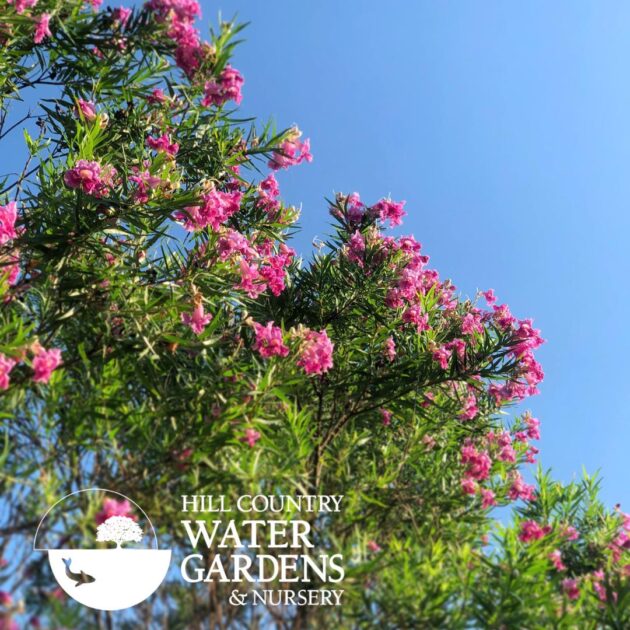October 31, 2024

Written by HCWG Horticulturist and Garden Writer Meghan Smith
October 31st, 2024
I don’t know about you, but all I have ever wanted was to live in the woods–in a cottage or a chicken-legged hut, growing herbs and fruit and spending my days with a foraging basket over my elbow and my trusted canine companion by my side, walking down paths where the trees arch above, making the forest feel like a cathedral.
I love trees, and I know I’m not alone. Lots of us love trees because they’re beautiful. But trees give much more than just their beauty.
What Trees Do For Us
Trees seize the imagination. People want to plant trees; people who love the earth are called tree huggers. Why do we associate trees so strongly with environmentalism?
Trees perform numerous ecosystem services that directly and indirectly benefit humans by making the earth livable.
-
Prevent erosion: Tree roots hold soil in place. In places like central Texas, where rain comes in floods or not at all, the top soil would wash away without tree roots to hold it down.
-
Clean water: As water filters through the soil, the deep, strong roots of trees and other native plants clean it of impurities before it reaches the water table.
-
Cooler houses: Having at least one big shade tree on the west side of your house keeps your house cooler in the summer and helps your AC run more efficiently.
-
Higher property values: Having large, mature trees on your property can increase its value from 3%-15%
-
Cooler air: By providing shade, holding water in the ground, and releasing moisture into the air, trees cool the air around themselves, making strategic tree planting a key part of addressing the urban heat island effect!
-
Sequester carbon: Trees pull carbon dioxide out of the air, turn it into sugar, and then store that carbon in their living tissues. The larger and healthier the tree, the more carbon it stores each year, fighting climate change with every breath.
-
Reduce stress: The internet may tell you to touch the grass, but numerous studies indicate that you should hang out with a tree instead, as you can read here.
Provide food and habitat for wildlife: Due to their sheer size, native trees (especially oak trees) support more insect species and animals than any other life form. Use the National Wildlife Federation Plant Finder to find out how many species each genus of tree supports in your zip code!

Pollinators enjoy our early-flowering Redbud Trees!
What Can We Do for our Texas Trees?
In the spirit of reciprocity, let’s consider what we can do for trees not just this month, but all year.
Learn about them. One of my arborist friends likes to say that given everything trees do for us, the least we can do is learn their names. Here are some ways to learn more about our friends, the trees:
-
Attend a Tree ID walk: I volunteer with TreeFolks as a Tree ID Walk leader! Come with me or one of my colleagues on a slow meander through a park and we’ll teach you to look closely at trees.
-
Visit a public garden: Whether it’s the Wildflower Center or a local library garden planted by Native Plant Society volunteers, there are lots of beautiful examples of planted landscapes using trees well.
-
Read a book: The Nature of Oaks by Doug Tallamy takes you through a year in the life of an oak tree:
-
Listen to a podcast: This episode of Radiolab changed my life and I highly recommend it.
-
Attend one of our classes!
Plant them. Plant them in your yard. Join a tree planting event with Treefolks (link). Choose native trees, and plant them at the right time of year (which is now! That’s why Texas Arbor Day is the first Friday in November.
Take care of them. Our yards are built, in artificial environments that pose certain difficulties for trees, and even native trees need our help in order to thrive.
-
Choose the right place for each tree. If you’re not sure whether the tree you want to plant is a good choice for your chosen spot, come talk to us about it!
-
Water your trees. Even your established, mature trees need at least one inch of rainfall per month. I’m worried that this is going to be a dry winter, and I’m prepared to irrigate my trees each month that we don’t get rain. More on watering trees here (https://hillcountrywatergardens.com/watering-trees-and-shrubs/)
-
Protect the roots. Make sure that the root flares of your trees are exposed, try not to cut into roots when you dig, and use wood mulch, grass, or native plants in your yard instead of landscape fabric and rock mulch so that roots are cool and able to breathe.
Feed your soil microbes. Trees thrive with the help of countless beneficial microorganisms that make the nutrients in the soil bioavailable to them. To keep those microbes happy, we recommend top dressing with compost each year, mulching in a doughnut shape around newly planted trees, Microlife products, and fungal foods like humic acid, seaweed, and fish emulsion. We also urge you to leave the leaves so that the trees can feed themselves, just like they would in the forest. Leave the Leaves!

Drought-resistant Desert Willows provide pollen all summer long! This is a native selection named 'Bubba' planted in our landscape.

You must be logged in to post a comment.